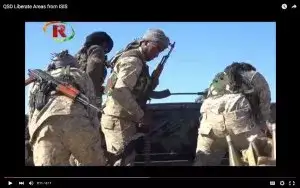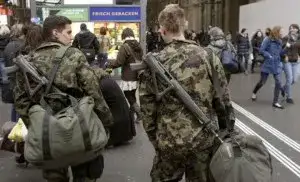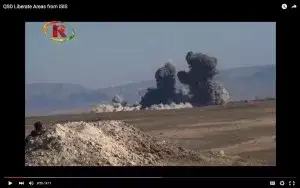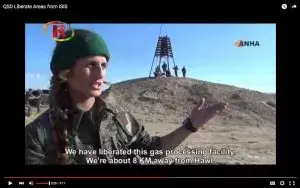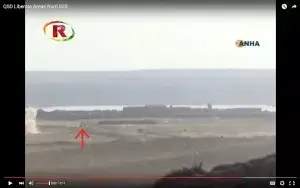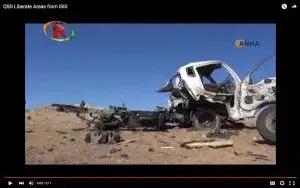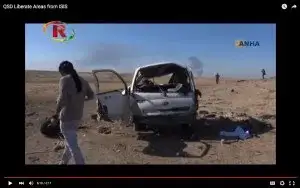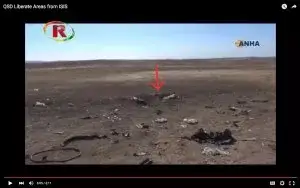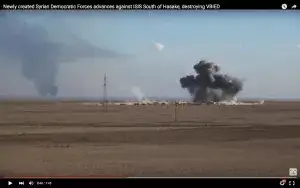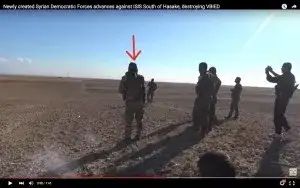Syrian Democratic Forces: Possibly the people we’ve needed
December 13, 2023 by Thomas Wictor
On October 11, 2015, a new Syrian rebel alliance was announced: the Syrian Democratic Forces.
A Kurdish militia in northern Syria has joined forces with Arab rebels, and their new alliance has been promised fresh weapon supplies by the United States for an assault on Islamic State forces in Raqqa, a spokesman said on Monday.
The alliance calling itself the Democratic Forces of Syria includes the Kurdish YPG militia and Syrian Arab groups, some of which fought alongside it in a campaign that drove Islamic State from wide areas of northern Syria earlier this year.
The Arab groups in the new alliance are operating under the name “The Syrian Arab Coalition” - a grouping which U.S. officials have said would receive support under a new U.S. strategy aimed at fighting Islamic State in Syria.
A spokesman for some of the Arab rebels said they were told by Washington that new weapons were being sent to help them launch a joint offensive on the city of Raqqa.
“We met the Americans and this has been approved and we have been told these new arms … are on their way,” said Abu Muazz, a spokesman for the Raqqa Revolutionaries Front, a grouping of mainly Arab tribal insurgents who are mostly drawn from the Raqqa area.
Arabs call the alliance the QSD (Quwwāt Sūriyā al-Dīmuqrāṭīya), which is the name most commonly used. In the short time that the alliance has existed, the QSD has racked up an impressive series of victories.
The western-backed Kurdish-Arab alliance of the SDF has regained more than 220 villages and towns in Hasakah province from ISIS over nearly two months of military operations.
The Syrian Democratic Forces (SDF) include Kurdish units of the YPG and YPJ, the Syriac Military Council, the Arab tribal group of al-Sanadeed, al-Jazeera brigades, Jaish al-Thuwar group and Burkan al-Furat battalion.
This video is quite interesting. SOMEWHAT GRAPHIC IMAGERY OF DEAD TERRORISTS.
These men wear Emirati uniforms.
They appear to be well trained, because they carry their rifles slung over their backs, barrel down, with the stock folded, like these Swiss soldiers.
President Obama said that the US would send fifty US Army Special Forces soldiers to aid the Syrian Democratic Forces in a noncombat role. I take the president at his word. President Obama is terrified both of causing civilian casualties and putting Americans in harm’s way. Therefore I don’t think that US special operators are directing the air strikes that help the Syrian Democratic Forces.
That’s a salvo of at least four aerial munitions. Although the Syrian Democratic Forces have been given targeting equipment, I’ll tell you in a minute why I think these air strikes are being directed by joint terminal attack controllers (JTACs), airmen embedded with the ground troops, in this case as part of a special-operations unit.
Syrian civil war, global problem
The Kurdish camera operators who filmed the action in the video above were very careful to avoid catching a lot of important elements of the battle. This tells me that whoever is helping them doesn’t want it known. Although the Kurdish YPG and YPJ militias are great fighters, they’re light infantry. This limits what they can do.
Despite existing for only two months, the Syrian Democratic Forces are carrying out a remarkably successful offensive toward Raqqa—the Islamic State capital in Syria. There have to be special-operations units attached to the alliance. Air power alone can’t account for the speed and skill.
Islamic State terrorists booby trap everything they take over, and when they retreat, they leave behind snipers. In Iraq, the Kurdish liberation of Sinjar (November 12-14, 2015) was slowed by improvised explosive devices and snipers. Before they left, the terrorists destroyed the city.
Therefore if the Syrian Democratic Forces are capturing gas processing facilities intact, it means that someone is sneaking up at night and killing all the terrorists guarding them. Though it may be the militias, I think it’s more likely that professional special operators are doing the job.
Here comes an Islamic State truck bomb.
The next thing we know, it’s blown up.
Wouldn’t it have been great from a theatrical (and propaganda) viewpoint to show the Kurds destroying it? Well, I don’t think they did. The vehicle has no holes in it from a high-explosive fragmentation warhead, so I don’t think someone fired a missile at it.
There’s a big crater in the ground close to the wrecked truck.
I think the vehicle was hit with an aerial munition that set off the explosives in the bed, and then the truck did a few somersaults and ended up smashed and half-naked, with a dead dumbass huddled nearby.
It was a magnificent strike, and it appears to have been an inert munition, because the truck has no holes in it.
Israeli or Emirati pilot, I’m betting.
This next video explains why I think it’s not the US who’s helping the Syrian Democratic Forces with air strikes.
At 0:22 and 0:27, there are detonations. They’re sonic booms.
The munitions that blew up the truck were powered, and they broke the sound barrier.
You hear the two munitions exploding slightly apart at 0:40. Obviously the camera operator was under orders to not film the actual strike. That’s why it’s several seconds before we see the cloud.
Look how far to the left the gray dust cloud extends on the ground. That’s from the sheer speed of those supersonic powered munitions. They came in at an almost-horizontal trajectory.
Just so you understand how massive this explosion was, it took this piece of debris thirty-five seconds to come down.
The crowd of Kurdish militia are jubilant and raucous—except for one man.
He doesn’t move or react in any way, and he stands ramrod straight. That’s because he’s a professional. He’s probably an Emirati, a special operator or maybe the JTAC who called in the strike.
Why didn’t the camera operator focus on the truck bomb before it was hit?
Well, play the video again and listen. Except for the sonic booms, there’s no sound leading up to the explosion. We aren’t allowed to know what fired the missiles.
In this well-known video of the attack on the Faj Attan missile base in Sana’a, Yemen, on April 20, 2015, you can hear multiple jet engines before the munition finds its target.
I can’t identify either the munitions or the delivery system that took out the truck bomb, but both the Syrian and Yemeni explosions were the same distance from the camera operators—1.5 miles (2.4 kilometers).
Both videos show new technology, shared by several Middle Eastern nations. Now can you appreciate how catastrophically powerful the explosion in Yemen was?
What’s amazing to me is how much has been accomplished without any fanfare. First Iran and Hezbollah lost all their commanders, and now a brand-new ground force supported with new weapons is effortlessly slashing its way toward the heart of the Islamic State.
We live in truly exciting times.
Update
Somebody has seen the writing on the wall.
[Turkish President Recep Tayyip Erdoğan] said the Turkish troops in Iraq not only trained Iraqi forces, but also the Kurdistan Regional Government (KRG) peshmerga forces to better fight DAESH. “With DAESH forces nearing the region, there arose the need to deploy a protection force. This is nothing like an occupation,” he said, citing Turkey’s previous stance against any occupation of the country.
Everybody, prepare to welcome the newest addition to the UN. Its name will be Kurdistan.
This article viewed 686 times.

